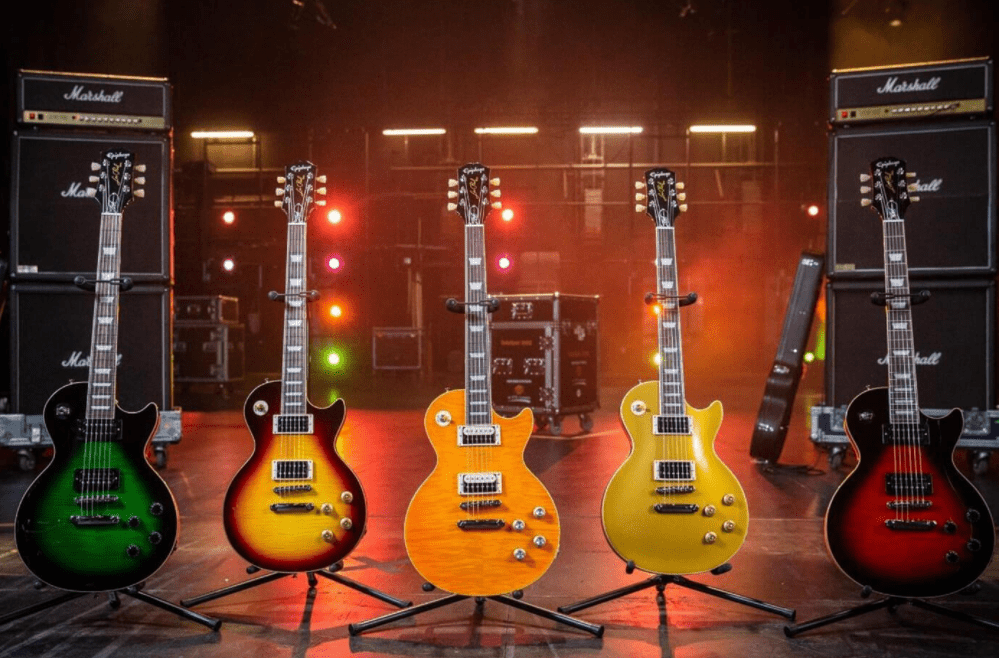Manufacturing guitars is an art that not everyone can master. When you have to care for both professionals and beginners while keeping the price at reach, it is very more difficult. Epiphone has been successfully producing great quality guitars for more than twelve decades. The passion of Epiphone is about more than just producing an instrument. They know what is inside a musician who makes them have to, want to, and express themselves. There is a very interesting history of Epiphone guitars. Let’s dive in to discover how a small guitar manufacturer transformed a simple music instrument into one of the best guitars ever existed.
History of Epiphone Guitars
The founder of Epiphone, named Epi Stathopoulo, was always at the forefront of music. Stathopoulo was the first instrument manufacturer to embrace jazz music and also led the industry away from banjo and mandolin production and into producing guitars. He was only twenty-four when he obtained one of many patents that entirely change fretted instrument manufacturing forever. The first pick-up with individual pole pieces, extension truss rod design, and the Tonexpressor were all Epiphone innovations.
The Popular Era
It was 1941 when the greatest contribution to the guitar world was made by Les Paul during experiments in the Epiphone factory. Such experiments led to the Les Paul Log and the very first solid-body electric guitar. Popular musicians like Joe Pass, George Van Epps, Howard Roberts, Harry Volpe, and other Jazz guitarists would make history with an Epiphone guitar.
Epi was only 22 years old when he became the head of this family business. In fact, he was blessed with an acute business mind, and he was well aware of the changing world. At first, he refined the banjo design with innovations in a tone ring configuration and rim construction.
The New Era
In 1923, he gave a new name to his company, Epiphone. This name was derived from his nickname and the Greek language. The first Epiphone recording banjo series was introduced to the public in 1924. In 1928, the company bought another banjo manufacturer and changed the name to the Epiphone Banjo Company.
In 1929, the first production of Epiphone guitars was introduced. These recording guitars of spruce and laminated maple became popular due to the declining banjo demand.
Gibson was one of the main competitors of Epiphone, whose instruments offered excellent volume and projection as compared to Epi’s. In 1931, Epiphone was manufacturing archtop guitars that were able to compete with Gibson, including Epiphone DeLuxe, Broadway, Tudor, Masterbilt, and Windsor Series of guitars.
One of the prime advantages of this rivalry between Gibson and Epiphone was that the guitar production got bigger and better with more luxurious features. Epiphone improved the size of its DeLuxe, Broadway, and Triumph guitars to make them better than similar Gibson guitars.
Epiphone guitars were getting popular with musicians. Popular musicians hung out at the headquarters of Epiphone in Manhattan. The first electric guitar of Epiphone, the Electar, was introduced in 1935. The prominent feature of this best electric guitar was that Epiphone equipped this one with adjustable pickup pole pieces. Further, the company produced electric Hawaiian guitars and a line of upright basses.
The Hard Times
When World War ll started, Epi suffered a lot. Epi passed away during the war, and without him, the company fell on hard times. In 1957, Epiphone was bought by Gibson. The brand tried to resurrect the popular Epiphone basses for their own product line.
Gibson’s general manager, Ted McCarty, knew the intact reputation of the Epiphone brand, and he decided to revive the Epiphone name. He decided to sell the Epiphone instruments to the dealers who had no rights to sell Gibson products.
Epiphone instruments were not just Gibson replicas at budget prices. Some of the classical Epiphone guitars, including the Emperor, DeLuxe, and Triumph, reappeared along with the new models like the semi-hollow Sheraton and solid body Moderne Black.
It was the time when Epiphone introduced their own guitar amplifiers. Also, new acoustic guitars such as the square-shouldered Frontier were also produced by the brand. In the 1960s, Epiphone acoustic guitars like the 12 string Bard, Serenadar, and the Troubadour flattop guitars appeared on the market. The Epiphone Seville classical guitars were also reintroduced.
The most famous guitar was the semi-hollow double-cutaway Casino guitar made popular by The Beatles; John Lennon, George Harrison, and Paul McCartney all appeared in their performances with Epiphone Casino guitars.
At the same time, Epiphone was focusing on classical bass guitars, including the Thunderbird IV, the best electric bass guitar that still looks modern. Epiphone bass amplifiers and guitars are well known for their tube sound. You can still find Epiphone Valve Junior amp heads, combo amps, half stacks, and the popular Blues Custom tube amp.
To minimize the cost, Epiphone became the pioneer in manufacturing instruments in Asian countries, including Korea and Japan. Flagship Gibson guitars such as Les Paul and SG were introduced under the Epiphone name at budget prices.
Epiphone Electric Guitars
The brand also started to issue limited-run electric guitars from its Gibson Nashville factory. Popular guitar players like Noel Gallagher and Chet Akins signed on with Epiphone. The reintroduction of the Masterbilt guitar and Paul McCartney Texan acoustic guitar made a huge impact on the music world. In 2004, the company moved its manufacturing unit to China.
Final Words
Today, Epiphone is offering a wide range of guitars. Whether you are starting your career and looking to find the best acoustic guitar for beginners or want to buy the best acoustic guitar for stage performance, Epiphone has all covered for you. Epiphone focuses on producing budget guitars with good quality and innovation. Last but not least, Epiphone is known for high-end guitars from musicians like Marcus Henderson, the Joe Bonamassa Goldtop, and the Zakk Wylde ZV custom.



